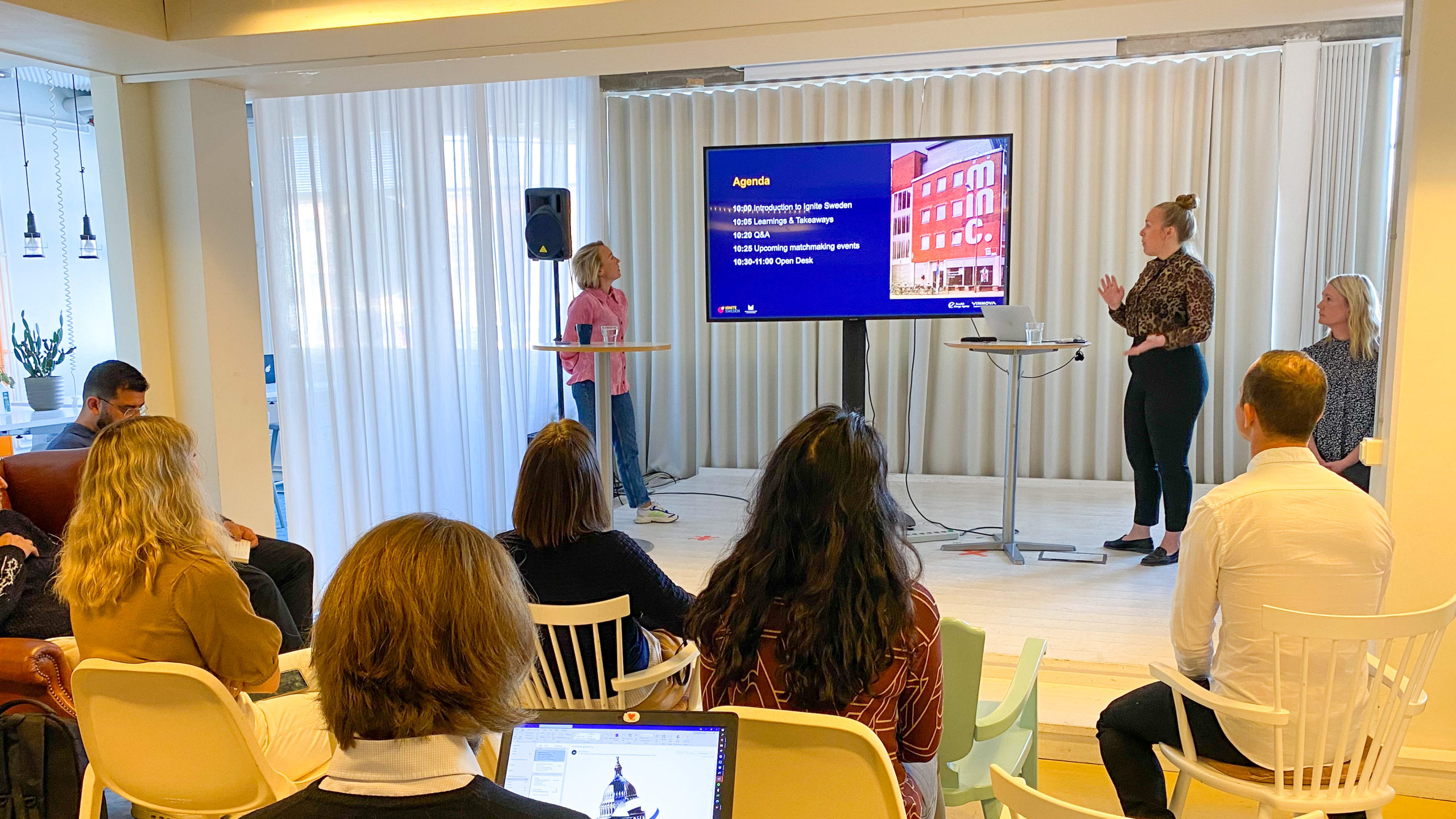10 Tips for Startups When Doing Business with Corporates
Our team shared insights on startup-corporate collaboration at a session held at the Malmö’s incubator Minc last week.
May 6, 2022How to best move from a pilot project to a full rollout is a sticking point for many corporate and startup collaborations. Three AI startup CEOs discuss how companies can better prepare for scaling projects from the very beginning.

It can be difficult to move from the pilot process to the rollout phase but there are some practical ways to ease the process, including clearly defining what problem the startup is there to solve early on.
“Corporations can sometimes get over excited about new technology like AI. It is easy to lose track of what problem you will solve. At the end of the day, it is just another tool that’s going to help the corporate. Without real problems it will be hard to show your true value and get things done,” says Jon Linden, CEO of Ekkono.
To address this issue, Shahan Lilja, CEO of Mavenoid suggests a practical way to get everyone on the same page before a pilot even begins. Mavenoid always creates a one-page project charter with their customer that clearly defines the purpose, goals, deliverables, timeline, stakeholders of a potential project.
“We always try to make the customer a part of the process of making it. It is very important that multiple stakeholders on the customer side feel that they have created this artifact.”
Martin Rugfelt, CEO of Sentian, also says this pre-process is essential and adds that having domain expertise in the room and available to work on the project from the beginning, as well as agreeing on data access to ensure the technology can work for the company is also crucial for success.
“We also put a lot of effort into the KPI:s and how to measure them so we really understand each other and the value we create is measurable.”
Ensuring the business model is sound is also essential to getting over the scaleup hurdles and for Jon, this shouldn’t be such a big issue if you have set the right goals in place at the beginning.
“The pilot should be an integral part of a project, it shouldn’t be a stand alone thing. It should be a validation along the way to solving a real problem. The question should really be what does it take to roll this out and the focus should be on the end product of the problem you’re trying to solve rather than the pilot being an end of itself.”
Martin adds that you need to have a good process for testing and learning from that first pilot, so any issues that arise can be fixed and the project can be scaled up. This means there needs to be training and all of the other components. “Just because you are working with a startup doesn’t mean it is going to be cheap, it is going to cost just as it does when you are rolling things out with bigger companies.”
“You can’t validate your business model by giving things away for free. Always charge for something that adds value to the customer. By digging into what value your solution brings to the table, it is much easier during and after the pilot to show the value of your technology. If you successfully solve a problem easier and cheaper, you will have successful collaboration and a new customer.” says Jon.
Sharan also says building the business model into the contract at the beginning of the pilot can ensure you’re talking to the right people from the start.
“You will be forced to talk to the real problem owner. Instead of the innovation officer who may get promotion based on the number of projects they run. Then you hopefully solve the real problem and show the real value of your technology.”
Five Main TIps from AI CEOs:
Have a clear goal from the beginning- Make sure both parties are on the same page and have an understanding of what challenge the startup will provide a solution for. One way to do this is to create a short project charter before the process starts.
Watch the full discussion on how to design an AI pilot for success here:

Our team shared insights on startup-corporate collaboration at a session held at the Malmö’s incubator Minc last week.
May 6, 2022
Researchers Tomas Blomquist, Sujith Nair and Medhanie Gaim share their best practice tips for corporates wanting to begin collaborative partnerships.
August 9, 2022
Follow these eight steps for making the most of your collaboration projects with public organizations and corporations.
December 20, 2022
We will select 5 startups with smart energy-related solutions for a new program that we run together with Energimyndigheten. The participants will get support into...
August 19, 2019| Cookies that we use |
|---|
| close-cookie-bar |
| wants-ec-cookies |
| wants-fc-cookies |
| wants-mc-cookies |
| wants-ac-cookies |
| Cookies that we use |
|---|
| Cookies that we use |
|---|
| _gid |
| _ga |
| _ga_G3QPMYQ0S9 |
| Cookies that we use |
|---|
Sign in to our digital platform Ignite Magic to join our program, check out our upcoming matchdays, update your company profile, and access useful resources such as legal templates and other material to help you prepare for your meetings.
Click the boxes below to learn more about our offerings and how to get started.